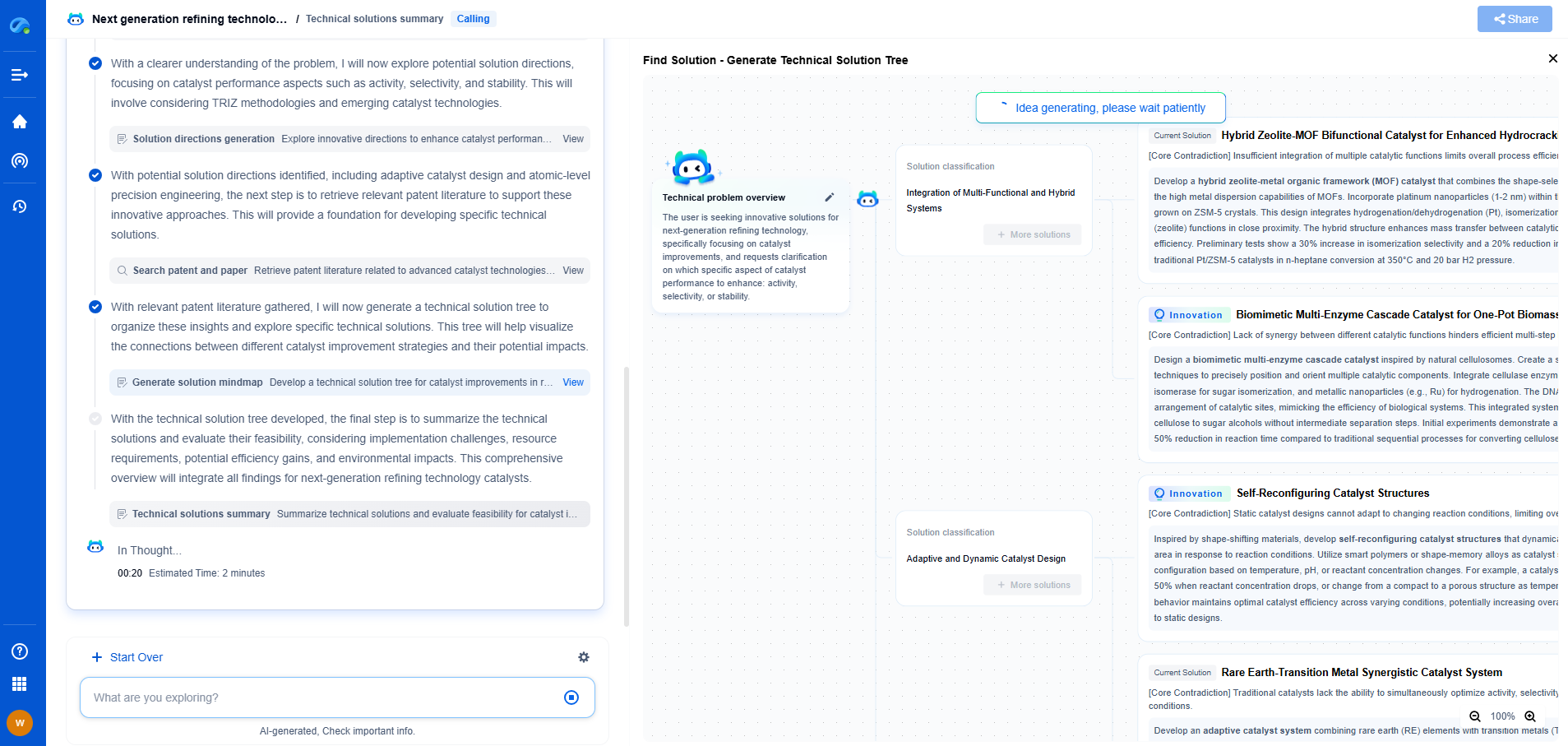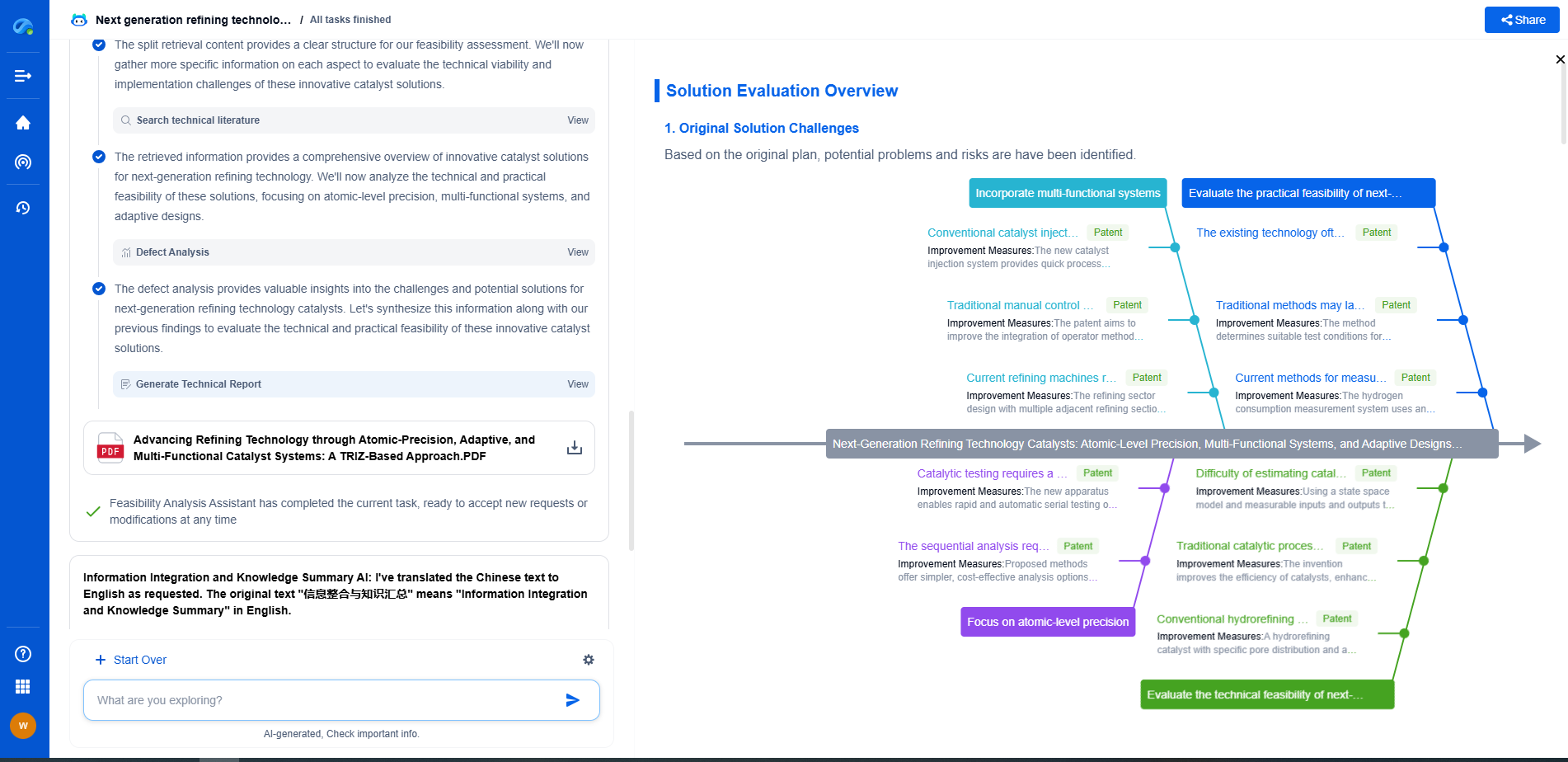Snake Arm Robots: The Ultimate Solution for Confined Spaces?
JUN 26, 2025 |
In recent years, snake arm robots have emerged as a groundbreaking innovation in the world of robotics, offering significant advantages in maneuvering through confined spaces. Their flexible, slender design mimics the movements of a snake, allowing them to navigate through tight, convoluted environments with ease. This unique capability positions them as a potential solution for industries dealing with complex operations in restricted areas.
How Snake Arm Robots Work
Snake arm robots consist of multiple segments connected by joints, allowing them to bend and twist in various directions. Their design is inspired by biological snakes, which have evolved to move effortlessly through narrow spaces. Each segment is equipped with motors and sensors that coordinate movement, providing precise control over the robot's shape and path. This makes them ideal for tasks requiring high levels of dexterity and agility.
Applications in Industry
Snake arm robots are making waves across various sectors. In the automotive industry, they are used for assembling parts in areas that are difficult for human workers to reach. Their ability to maneuver through tight spaces allows for more efficient production processes. Similarly, in the aerospace sector, snake arm robots facilitate maintenance and inspection tasks inside aircraft engines and fuselage sections, where traditional tools cannot reach.
In the medical field, snake arm robots are revolutionizing minimally invasive surgery. Their flexibility and precision enable surgeons to operate in areas that previously required open surgeries, reducing patient recovery times and complications. Additionally, their use in search and rescue operations offers the potential to reach trapped victims in collapsed structures, providing a lifeline in emergency situations.
Advantages Over Traditional Robots
Compared to traditional robotic systems, snake arm robots offer several advantages. Their compact design allows them to access confined spaces without the need for extensive modifications to the environment. This reduces the time and cost associated with preparing sites for robotic intervention. Their flexibility also means they can adapt to varying conditions and obstacles, making them more versatile than rigid robots.
Moreover, snake arm robots can be equipped with various tools and sensors, expanding their functionality. From cameras and grippers to cutting and welding equipment, these add-ons enhance their ability to perform complex tasks in challenging environments. This adaptability makes them a valuable asset in industries where space constraints and intricate operations are common.
Challenges and Considerations
Despite their promising potential, snake arm robots face certain challenges. Their intricate design requires advanced control systems to navigate precisely, which can be expensive and complex to implement. Ensuring reliability and maintaining the robot's delicate components in harsh environments also poses a technical challenge. Furthermore, training personnel to operate these sophisticated machines could require substantial investment.
Looking Ahead: The Future of Snake Arm Robots
As technology continues to evolve, the capabilities of snake arm robots are expected to expand further. Advances in artificial intelligence and machine learning could enhance their autonomy, allowing them to make real-time decisions and adapt to unforeseen circumstances. Additionally, improvements in materials and design could lead to more robust and cost-effective models, broadening their accessibility in various industries.
In conclusion, snake arm robots represent a promising solution for operations in confined spaces. Their unique design and capabilities are transforming industries, from manufacturing and aerospace to medicine and emergency response. While challenges remain, the ongoing development and refinement of these robotic systems hold the potential to unlock new possibilities and redefine how we approach tasks in restricted environments.
Ready to Redefine Your Robotics R&D Workflow?
Whether you're designing next-generation robotic arms, optimizing manipulator kinematics, or mining patent data for innovation insights, Patsnap Eureka, our cutting-edge AI assistant, is built for R&D and IP professionals in high-tech industries, is built to accelerate every step of your journey.
No more getting buried in thousands of documents or wasting time on repetitive technical analysis. Our AI Agent helps R&D and IP teams in high-tech enterprises save hundreds of hours, reduce risk of oversight, and move from concept to prototype faster than ever before.
👉 Experience how AI can revolutionize your robotics innovation cycle. Explore Patsnap Eureka today and see the difference.
- R&D
- Intellectual Property
- Life Sciences
- Materials
- Tech Scout
- Unparalleled Data Quality
- Higher Quality Content
- 60% Fewer Hallucinations
Browse by: Latest US Patents, China's latest patents, Technical Efficacy Thesaurus, Application Domain, Technology Topic, Popular Technical Reports.
© 2025 PatSnap. All rights reserved.Legal|Privacy policy|Modern Slavery Act Transparency Statement|Sitemap|About US| Contact US: help@patsnap.com

